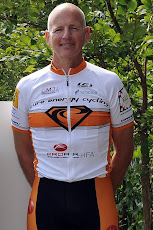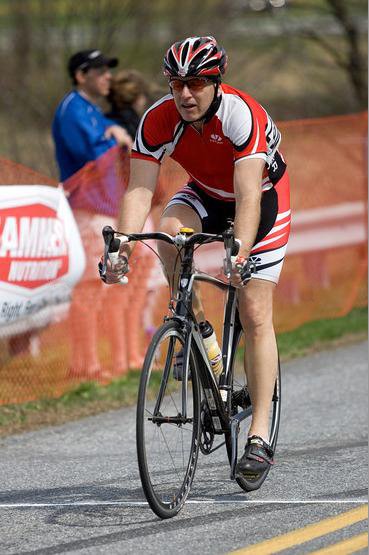
I always write a blog in the November/December timeframe re: Weight Gain. Why? Because that's about the time I start taking action myself to shed a few (more like a bunch) pounds. Yeah, I gained a few. Hey, it's not just me..the average Joe will gain anywhere from 5-10 lbs. during the Holiday Season alone. Me, I actually gained it (10 lbs) prior to the Holiday Season (during my vacation in the Florida Keys)..but I'm sure this recent Thanksgiving only helped tack a pound or two on to that total. And, for all you slim Jim's out there that can eat/drink all they want without gaining a pound (by the way I hate you guys), there is nothing wrong with packing on a few extra pounds in the off-season. One article I read on SlowTwitch.com actually said that the added weight gain helps repair the body at the cellular level. (Yeah, right, probably some fat guy in the office that wrote that one..haha).
But, after thinking more about it, why feel guilty? Why not enjoy yourself in the off-season? Go ahead...drink some beers with the boys, get drunk, eat pizza/chili/burgers/fries/etc. After all, don't you deserve it for being so good during the training season? Enjoy that Holiday feast and top it off with a big-ass piece of apple pie and throw on a scoop or two of vanilla ice cream (my fav) for the road.
However, when the Holidays are over, here are 5 tips I have to get rid of those excess saddle bags around your waist/gut/ass that you won't need (or want) on your training ride:
#1- Write it down. Start tracking EVERYTHING you put in your mouth from the moment you wake up to the moment you go to sleep. Remember, calories in=calories burned in order to maintain your current weight. If you ingest more than you burn, guess what..you're gonna gain weight. You'll be amazed at how much JUNK you sneak into your daily diet when you write it down. You'll also be more aware of what you do put in your mouth when you write it down...and you'll think twice about it next time. Go online, there are plenty of free calorie counters to help you track your calories. I just downloaded a freebie calorie counter onto my Crackberry called- Calorie Counter by FatSecret.
#2- Time it. Lets face it, the last thing you want to do is eat a BIG dinner and sit on your ass and watch TV until you fall asleep. Or worse, snack AFTER that BIG dinner. And, do NOT skip breakfast..it's the most important meal of the day..even if it's only a bowl of cereal. Ever hear the expression "Eat Breakfast like a King, Lunch like a Prince, and Dinner like a Pauper." Live by it. Or, better yet, eat small portions spreadout throughout the day. As far as exercising, I find it better to get your workouts done in the morning or IMMEDIATELY after work. Morning workouts are good because your body is glycogen depleted from 8 hrs. of sleep and your body is just craving carbs to burn. You starve your body of carbs during your morning workout and it will grab the next best thing..FAT. Be careful, however, not to go too hard or too long in the morning on an empty stomach or your body will start burning protein..i.e. muscle mass. Keep your workout to no more than 45 minutes at Tempo/Threshold pace. If you're not a morning person, make sure you do your workouts IMMEDIATELY after work. Why? I'll bet you anything you want that if you go home and eat dinner first..9 out of 10 times you'll find an excuse not to go the gym (or even in your basement) for a workout. Add a glass of wine (or beer) to your dinner and I'm almost certain the last place you'll end up is in a gym. Been there done that! If you do eat dinner first, before working out, keep it small..make sure there are plenty of carbs in your meal and keep the fat portions down. Wait at least an hour before you workout or you'll end up in the bathroom..trust me. Again, been there done that!
#3- ON days and OFF days. On the ON days (when you are working out) make sure you are properly fueled (with Carbs) and on the OFF days lighten up. If you're not fueled properly for a tough workout, you're going to cut your workout short or do it half-assed. Remember, when we're working out (the ON days), we're basically tearing our muscles down during exercise so that they repair bigger/stronger on our OFF days. So, we want to do as much work as possible..in some cases hi-intensity work. The OFF days are also good days to lighten up on the food intake particularly the carbs. The OFF days, are also good days to relax and catch-up on much needed sleep/rest..especially if you're training hard during the ON days. Remember, it's the OFF days where your body repairs itself STRONGER than before. No rest, no repair.
#4- Moderation. I am NOT a fan of diets or weight loss companies like Weight Watchers, etc. Why? Because for the most part, diets don't work and weight loss companies charge you too much to do what you can do on your own. Plus, their meals look like crap. Lets face it...if you eat/drink whatever you want in moderation you're not going to have a problem with weight gain. What's more important..I think..and I never see anything written on the subject of dieting..is "self-control" and "discipline". Hey, make no bones about it..when I get my morning coffee at Dunkin Donuts don't you think I'd like to add a couple Bavarian Creme Donuts to that order? Hell yeah! But I don't, I resist..I just look at the fatties standing in line with me and think, if I eat those donuts I'll be looking like them in no time. BTW, speaking of Dunkin Donuts..I just saw on my Calorie Counter that 1 Dunkin Donut Bavarian Creme Donut has 260 calories compared to their Banana Walnut Muffin that has 540 calories (and twice the fat). See, good to have that Calorie Counter with you.
#5- Educate Yourself. There are a bazillion articles written on the internet about Weight Loss. You don't even have to spend a dime at your local Barnes & Noble. Read! Specifically, read articles about athletes such as yourself...how they eat...how they train...when they train, etc. There's no excuse not to. It aint rocket science. As I said earlier, it's just Calories IN vs. Calories BURNED. When Calories IN exceed Calories Burned..you gain weight..and vice versa. It takes a deficit of 3500 calories in a week to drop 1 lb. That's 500 calories a day which can easily be burned while spinning on your home trainer for 45 minutes to 60 minutes each morning. So, if you do NOTHING differently re: eating and exercising, the way you've done in the past, and you increase your calorie burn by 500 calories a day, you'll lose 10 lbs. by the end of January.
Power ON! Coach Rob






















 Why am I selling? Because I'm purchasing two new Computrainers that I'm going to be networking with other Computrainers for group indoor workouts and could use the cash to help defray the costs of these.
Why am I selling? Because I'm purchasing two new Computrainers that I'm going to be networking with other Computrainers for group indoor workouts and could use the cash to help defray the costs of these.








